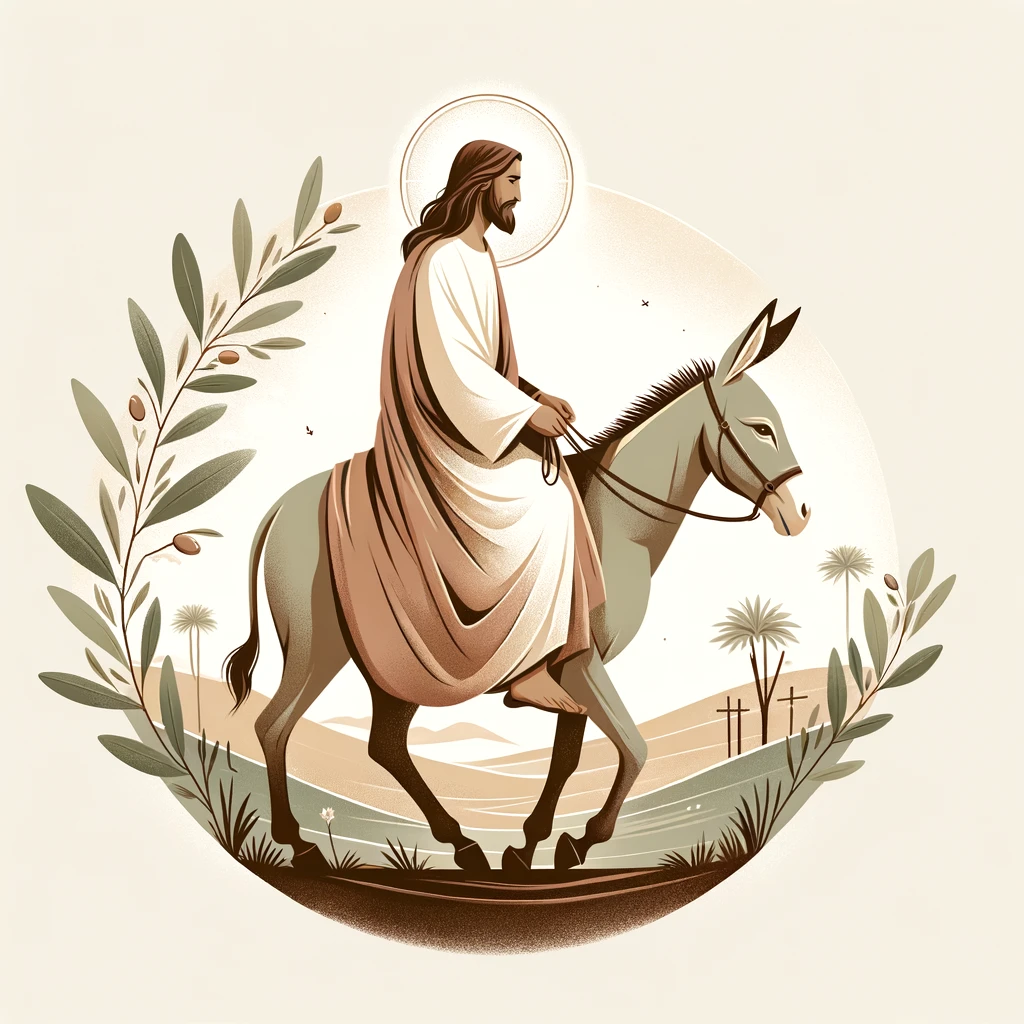The Coronation of a Humble King

The Triumphal Entry of Jesus into Jerusalem is an event teeming with symbolism and anticipation. The diverse crowd gathered, each individual harboring their unique expectation of the Messiah. Some envisioned a warrior king, while others were drawn by the miraculous tales, whispering amongst themselves about the man who could defy death. This mix of anticipation and confusion set a complex backdrop for the events to unfold.
The Diverse Crowd: Expectations of the Messiah
The crowd was a mosaic of beliefs and hopes. Among them, the Pharisees stood out, their skepticism thinly veiled, ready to question and challenge. Contrarily, Jesus’ followers were a whirlwind of emotions, grappling with their understanding of His ominous predictions and their place in His kingdom.
Pharisees vs. Followers: Contrasting Beliefs
The division was stark – Pharisees scrutinizing every move, while followers clung to hope and faith, each group representing the polarized views of society towards the figure of Jesus, the promised king.
A Tale of Two Parades: Contrasting Visions of Power

Jerusalem witnessed a profound juxtaposition of power – Pilate, embodying the might of Rome with his grand military display, and Jesus, who chose a humble donkey, echoing Zechariah’s prophecy and challenging the very notion of kingship.
“Rejoice greatly, O daughter of Zion! Shout in triumph, O daughter of Jerusalem! See, your king comes to you, righteous and victorious, humble and riding on a donkey, on a colt, the foal of a donkey”
Zechariah 9:9
Pilate’s Show of Force
Pilate’s entry was a spectacle of power, designed to awe and intimidate, a reminder of Rome’s unyielding dominion.
Jesus’ Entry: A Symbol of Humble Kingship
In stark contrast, Jesus’ entry was a silent manifesto of a new kingship – one rooted in peace and humility, a radical departure from the world’s understanding of power.
Jesus as the Promised King

Fulfilling the Prophecy: The Significance of a Donkey
Choosing a donkey, Jesus not only fulfilled ancient prophecy but also symbolized his peaceful mission, contrasting sharply with the typical warlike imagery associated with kings.
A New Kind of Kingship: Peace Over Power
Jesus’ kingship was marked by attributes alien to earthly thrones – love, sacrifice, and peace, offering a new paradigm of rule.
The People’s Response

The populace’s reaction was a mixture of jubilation and confusion, with palm branches symbolizing victory, yet the undercurrents of fear and skepticism from the religious elite hinted at the complex dynamics at play.
The Skepticism of the Pharisees
The Pharisees’ disdain reflected the tension between the old guard and the transformative message Jesus brought, a message that threatened the established order.
The Fall of Zedekiah
A significant event that precedes the Triumphal Entry is the downfall of Zedekiah, marking the end of David’s royal line. As described in 2 Kings 25:1-7, Zedekiah, the last king of Judah, was seized and forced to watch the slaying of his sons before being blinded and exiled to Babylon. Jerusalem was laid to waste, reflecting the crushed hopes of its inhabitants. Nevertheless, amidst sorrow and ruin, the people of Judah held fast to the prophecy that a Messiah from David’s lineage would arise to redeem their toppled sovereignty. Through the prophet Isaiah, God delivered a message of hope.
“But he was pierced for our transgressions, he was crushed for our iniquities; the punishment that brought us peace was on him, and by his wounds we are healed.”
— Isaiah 53:5
They were unaware that, centuries later, a humble King on a donkey would fulfill that prophecy. They could not listen to the words of the prophet Isaiah, who predicted the arrival of a suffering servant destined to carry their sins and bestow peace upon them.
The Restoration of the Davidic Line

The arrival of Jesus marked the dawn of a new epoch, heralding the revival of the Davidic dynasty not by means of conquest, but through the establishment of a realm founded on justice, peace, and love.
Jesus: The Fulfillment of the Davidic Promise
Jesus, referred to as the “Son of David,” was seen as the culmination of the Davidic line, a king whose realm transcended earthly boundaries, inviting ALL into a kingdom of peace.
A Kingdom for All: Beyond Ethnic Boundaries
The humility of Jesus’ kingship, celebrated on Palm Sunday, shattered the barriers that divided. His triumphal entry was not just for a nation but for every heart that seeks peace.
The Echoes of Solomon’s Coronation in the Messiah’s Entry

Solomon’s rise to the throne of Israel was a spectacle of grandeur and sacred anointing, as recounted in 1 Kings 1. His journey to sovereignty, however, faced obstacles. Adonijah, his half-brother, attempted to seize the throne, securing backing from influential allies. Nonetheless, the prophet Nathan (Remember him?), discerning the rightful successor, intervened to ensure Solomon’s anointing.
Riding on his father David’s mule, Solomon proceeded to Gihon where he was proclaimed king to the sounds of trumpets and the people’s exultant shouts. This event, rich in divine endorsement and prophetic realization, established a paradigm for the anticipated true King.
When Jesus, centuries later, approached Jerusalem, echoes of Solomon’s coronation rang in the air. The promised King, foretold by prophets, came in a display of humility far removed from the regal ceremonies of his forebear. Riding on a donkey, he fulfilled Zechariah’s prophecy and Israel’s long-held hopes. This act was not just a nod to tradition but a transformative redefinition of kingship — a rule not by power, but by peace and servitude.

By entering the city on a donkey, Jesus mirrored Solomon’s journey but imprinted it with a deeper meaning: His kingdom would reign not through force, but through love and sacrifice, a kingdom welcoming all who believed.
As we reflect on the pageantry of Palm Sunday, let us embrace the humility and kingship Jesus demonstrated, a kingship that resonates with the heart’s cry for peace and unity.
Embracing the Humble King



Leave a Reply